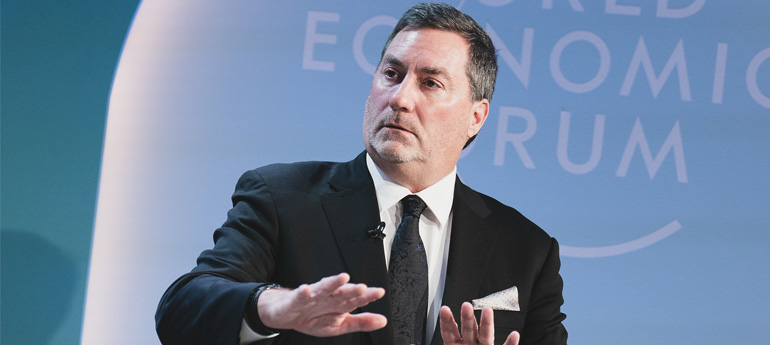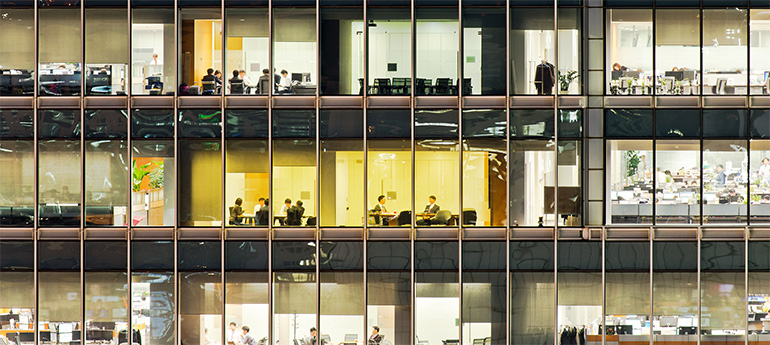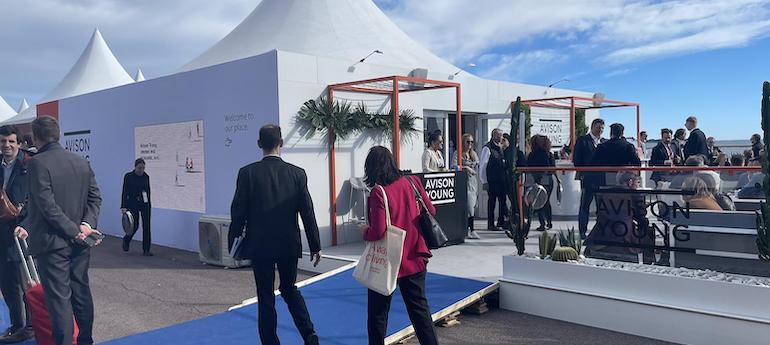How Tenants Can Return to Work (RTW)

Before we know it, we’ll be saying “Do you remember the quarantine of 2020?” But there will be critical steps for Tenants between then and now, and Tenants everywhere are developing a strategy to ensure a smooth transition. For the most part, this phase will be temporary, one of many steps towards normalcy, but some trends will stick permanently.
All tenants (industrial, flex, and office) will need to adjust to the idea that arriving at work may feel like boarding a plane. Employee wellness will be tracked with everything from contactless thermometers to airlocks that allow you into the building (only if you are fever-free) to wearable devices that monitor employee temperatures. Movements will be tracked to study how close you have come to healthy employees, sick employees, and common areas. And building systems will adjust to accommodate socially-distanced people in elevators, lobbies, and cafeterias with hands-free technologies and regulations.
What All Tenants Should Expect
There will be a few overarching trends that will apply to all workplaces during the RTW phase:
- Overall, employees (not employers) will be the ones to determine when they return to work, as the trend for employee autonomy and flexibility takes another huge leap forward.
- Debates around privacy, HIPPA, and non-compliance will swirl around the many wellness tracking methods imposed as they extend to family members and anyone that employees live with.
- Productivity will decline and/or stay low as RTW measures occupy the focus and resources of management and staff.
- Today’s thought-driven economy will suffer as less collaboration will, in most cases, mean less innovation, idea-sharing, and “thought collisions.”
- The long-time trend of open, collaborative, flexible, small work spaces will be reversed to provide workers with more closed, private, permanent, larger workspaces and be known as “de-densification.” In the same vein, building amenities for employees such as fitness centers, cafes, and meeting spaces, will no longer be in favor.
What All Landlords Should Do
It’s important for Tenants to understand their responsibilities, as well as those of their Landlord. More detailed information on what your Landlord should be providing can be found here, and summarized below:
- Communications. Landlords should provide a clear and consistent communications program to Tenants for a safe and effective RTW strategy.
- Physical Distancing Awareness. Landlords should provide a flexible strategy that changes with CDC guidelines for phases of physical distancing.
- Janitorial and Cleaning Services. Buildings will need to implement more frequent and more stringent janitorial and cleaning practices.
- Building Operations. Landlords should conduct a full review of all building operations and activities and adjust them accordingly to minimize exposure to the virus.
- Security. Building security is critical to ensure that management continues to provide a welcoming, but healthy workplace, while controlling visitors and deliveries.
- Mechanical and Building Systems. Air circulation, ventilation, and filtration are more important than ever. Landlords should audit their systems and upgrade their maintenance schedules in the context of the building and its Tenants.
- Signage. Proper signage communicates certain RTW procedures from management to Tenants and it’s critical that Landlords ensure their properties have it.
What Industrial & Flex Tenants Should Know
Many industrial and flex Tenants have a head-start on RTW. Depending on local executive orders, many have been deemed essential because their work can’t be completed remotely and/or they are related to e-commerce. However, many have struggled with supply chain disruption, a falloff in demand, and social distancing measures in their workplaces. Here are few things for industrial companies to consider as lock-downs subside and production ramps up:
- Automation. It has helped manufacturers and distributors to do more with less employees, and according to the Wall Street Journal it has dramatically increased the demand for college educated workers in their facilities. In the next three years, for the first time ever, the number of college-educated manufacturing jobs will surpass lesser education jobs. Since the Great Recession, U.S. manufacturers have added 1.4 million workers for a total of 12.9 million jobs (1.3 million of which were lost in April), many of them educated workers that require workstations, unlike traditional blue-collar workers. In short, in many facilities, laptops and cubicles have replaced overalls and locker rooms. These work environments will require thorough, regular cleaning and sanitation similar to what office environments will need.
- Contactless Environments. Tools, machinery, controls, and anything that workers handle in the traditional manufacturing sense will now require gloves and protocols to make them contactless.
- Surfaces. As of this writing, the Coronavirus lasts longer on hard surfaces than soft ones, and industrial facilities are typically the former. On one hand, the virus will last longer in these facilities, but on the other hand, it will be easier to clean.
- NNN. These leases, common in industrial buildings, put more maintenance on the Tenant than a gross lease, particularly when the Tenant leases the entire building. Tenants need to be conscious of this and understand where their Landlord’s responsibilities stop, and theirs start.
- Two-Week Shutdown. In the case of contamination, an office building can be shut down for two weeks while everyone works from home (now widely accepted), letting the virus die naturally. An industrial facility doesn’t have that luxury as a building shut-down means a deceleration in production to essentially zero.
- Contact Protocols. Office environments have designated seating for employees, but industrial environments have tangible products and inventory that employees work on separately and together as it processes. Protocols must be put in place to prevent and spread of the virus during these progressions.
- Impact of De-Densification. The office areas in industrial and flex buildings will need to de-densify as mentioned above. This will mean more office square footage that will eat into valuable production space in many industrial markets with a sub 5% vacancy rate.
What Office Tenants Need to Know
Office tenants face a more difficult transition during RTW because they have been largely working from home for the past two months and typically have more density than industrial users. In addition, a survey of 314 CFOs by Gartner found that only 26% of firms expect to return to the same level of prior office use in the long term. The Work-From-Home infrastructure has been in place for years and it just needed something like Coronavirus to jump-start it. More information on how they can navigate this transition is here, and summarized below.
- Space Planning & Cleaning. Office seating, common areas, and conference rooms need to be adjusted to accommodate for six feet of social distancing at all times with cleaning schedules that focus on high-touch areas and a deep-clean before RTW. Employees and visitors may need to be alternated in groups and logged to ensure the space does not get too dense.
- PPE. Hand sanitizer and face masks should be provided if needed and used when circulating throughout the space.
- Communication. Management should have a communications strategy in place with roles and responsibilities to communicate quickly and effectively with employees in case of infections, closures, and policy changes.
- People. Employees will have just as much a role in the a successful RTW as Managers. They will need to adjust to new technologies, be responsible for cleaning work stations, and generally complying with RTW rules.
- IT & Office Supplies. Equipment and office supplies to work from home will need to be provided and maintained in the event of a closure or staggered work schedule.
What’s the Tenant’s Perspective?
The RTW phase will be temporary, but a critical step to normalcy. Some trends will be temporary, but others will be permanent and a good Tenant Advisor will keep you ahead of these trends and create real estate strategies that support your business model and help you to come out stronger on the other side of Coronavirus.
Ed English is a Principal, Occupier Solutions, in our New Jersey office.
The spread of COVID-19 and the containment policies being introduced are changing rapidly. While information in the briefing notes is current as of the date written, the views expressed herein are subject to change and may not reflect the latest opinion of Avison Young. Like all of you, Avison Young relies on government and related sources for information on the COVID-19 outbreak. We have provided links to some of these sources, which provide regularly updated information on the COVID-19 outbreak. The content provided herein is not intended as investment, tax, financial or legal advice and should not be relied on as such.
-
 World Economic Forum, Davos 2024: Key Insights for the Commercial Real Estate Industry 31-Jan-2024 2:36:00 PM
World Economic Forum, Davos 2024: Key Insights for the Commercial Real Estate Industry 31-Jan-2024 2:36:00 PM -
 Breakthrough, agreement, and funding futures: COP28’s impacts on climate risk resilience and CRE 22-Dec-2023 8:13:00 PM
Breakthrough, agreement, and funding futures: COP28’s impacts on climate risk resilience and CRE 22-Dec-2023 8:13:00 PM -
 We will emerge from the trough: current market climates and outlooks on office. 22-Aug-2023 9:19:00 PM
We will emerge from the trough: current market climates and outlooks on office. 22-Aug-2023 9:19:00 PM -
 Peak uncertainty into peak opportunity: The most challenging and rewarding years we will ever see 21-Jul-2023 12:45:00 PM
Peak uncertainty into peak opportunity: The most challenging and rewarding years we will ever see 21-Jul-2023 12:45:00 PM -
 Why we can’t just have nice things 28-Mar-2023 4:35:00 PM
Why we can’t just have nice things 28-Mar-2023 4:35:00 PM -
 Banking sector stress elevates real estate uncertainty 22-Mar-2023 8:53:00 PM
Banking sector stress elevates real estate uncertainty 22-Mar-2023 8:53:00 PM
